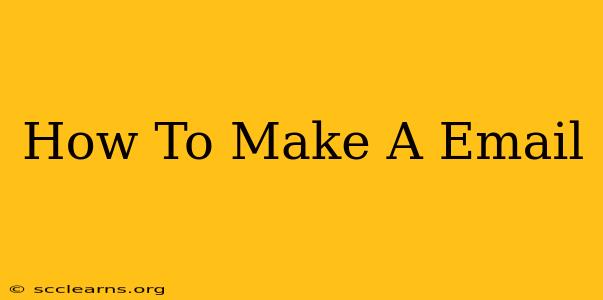Creating an email might seem simple, but crafting a professional and effective one requires understanding the nuances of email composition. This guide will walk you through the process, from crafting the subject line to perfecting the closing. Whether you're sending a casual message to a friend or a formal email to a potential client, these tips will help you master the art of email writing.
Understanding Email Components: The Building Blocks of Effective Communication
Before diving into the creation process, let's break down the key components of a well-structured email:
1. The Subject Line: Your Email's First Impression
The subject line is crucial. It's the first thing the recipient sees, and it determines whether they'll even open your email. Keep it concise, clear, and relevant to the email's content. Avoid using ALL CAPS or excessive exclamation points, as this can come across as spammy. Examples of effective subject lines:
- "Meeting Confirmation: Project X" (Clear and concise)
- "Following Up: Job Application - [Your Name]" (Specific and professional)
- "Quick Question Regarding [Topic]" (Friendly and informal)
2. Salutations: Setting the Tone
Your salutation sets the tone for the entire email. Use a professional greeting for formal emails (e.g., "Dear Mr./Ms./Mx. [Last Name]") and a more casual greeting for informal emails (e.g., "Hi [Name]"). If you're unsure of the recipient's preferred title, it's always best to err on the side of formality.
3. The Body: Communicating Your Message Effectively
The body of your email is where you communicate your message. Keep it concise and easy to read, using bullet points or numbered lists where appropriate. Break up large chunks of text into smaller paragraphs to improve readability. Ensure your message is clear, concise, and avoids ambiguity. Proofread carefully to eliminate any grammatical errors or typos.
4. The Closing: Leaving a Lasting Impression
The closing should match the tone of your email. For formal emails, use a professional closing such as "Sincerely," "Respectfully," or "Regards." For informal emails, "Best," "Thanks," or "Cheers" are appropriate. Follow your closing with your name and contact information.
5. Signature: Professionalism and Convenience
A professional email signature includes your name, title, company (if applicable), contact information (phone number, email address, website), and potentially your social media links. This streamlines communication and adds a touch of professionalism.
Step-by-Step Guide to Creating an Email
Now let's walk through the process of creating an email:
- Open your email client: This could be Gmail, Outlook, Yahoo Mail, or another provider.
- Click "Compose" or the equivalent: This will open a new email window.
- Add the recipient's email address: Enter the email address in the "To" field. You can also add recipients to the "Cc" (carbon copy) and "Bcc" (blind carbon copy) fields, if necessary.
- Craft your subject line: Make it concise, clear, and relevant.
- Write your email body: Remember to keep it concise and easy to read. Use clear language and appropriate formatting.
- Add a closing: Choose a closing that fits the tone of your email.
- Add your signature (optional): Include your name, title, and contact information.
- Attach any necessary files: If you need to send files, use the "Attach" button.
- Proofread your email: Check for any errors in grammar, spelling, or punctuation.
- Click "Send": Once you're satisfied, send your email.
Mastering Email Etiquette: Beyond the Basics
Beyond the technical aspects, effective email communication also involves understanding email etiquette:
- Respond promptly: Aim to respond to emails within a reasonable timeframe.
- Use a professional tone: Avoid using slang or informal language in professional emails.
- Be mindful of your audience: Tailor your message to the recipient.
- Respect privacy: Avoid sending sensitive information via email without proper encryption.
- Unsubscribe from unwanted emails: Manage your inbox effectively to avoid clutter.
By following these steps and mastering email etiquette, you'll be well on your way to crafting clear, concise, and effective emails— whether it's a casual update or a critical business communication. Remember, a well-written email reflects your professionalism and strengthens your communication skills.

